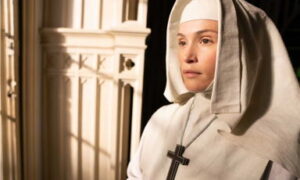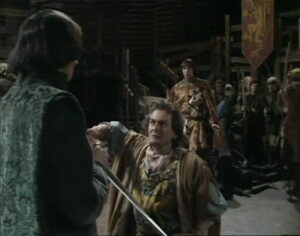mARCH 17TH 1450
Duke of Suffolk’s verdict
The Second set of charged (18 of them) which were minor compared to the accusation of being a traitor, but were very specific. A few are below.
William was accused embezzlement of royal funds, the perversion of justice. Plotted a French invasion and to replace the King with his son (who had married Margaret Beaufort of royal lineage). Controlled the appointments of sheriffs, responsible of murders and great extortions. William Tailboys was used as a blatant example of legal perversion.
William Tailboys was one of the Duke of Suffolk “Heavies”. He went around doing pretty much as he please (or his master pleased) with the Duke of Suffolk sheltering him from the worst of legal proceedings against him. This made William Tailboys several enemies, one of the biggest was Lord Cromwell. Tailboys and his men attacked Lord Cromwell during a meeting of the Star Chamber at Westminster. Whether this attack was an attempt to murder Lord Cromwell is not certain. Cromwell sought to remedy this attack by legal means, was blocked by Suffolk. Cromwell from that point on sought justice against Tailboys and the Duke of Suffolk with the help of parliament.
 He was also salaciously accused of defiling a nun, Malyne de Cay, which is technically true. Often women were sent to convents to become nuns, but it does not mean that they always want to be nuns. Perhaps this young nun was swept off her feet by the dashing young William and the act was consensual, as William made provisions for his illegitimate daughter. Her name was of Jane (or Joan) and he arranged for her to marry to one of the Stonard Family in Oxfordshire, Thomas Stoner – The Stonor’s are a up and coming family a bit like the Pastons of Norfolk, and like them there are several letters which gives an insight of day to day life in the 15th century.
He was also salaciously accused of defiling a nun, Malyne de Cay, which is technically true. Often women were sent to convents to become nuns, but it does not mean that they always want to be nuns. Perhaps this young nun was swept off her feet by the dashing young William and the act was consensual, as William made provisions for his illegitimate daughter. Her name was of Jane (or Joan) and he arranged for her to marry to one of the Stonard Family in Oxfordshire, Thomas Stoner – The Stonor’s are a up and coming family a bit like the Pastons of Norfolk, and like them there are several letters which gives an insight of day to day life in the 15th century.
With the Duke of Suffolk upon his knees in an inner chamber in the palace of Westminster he protested his innocence and submitted himself “completely to the king’s rule and governance. The In regards to the Dukes work for him in France that he decided that he was neither declared nor charged of treason – he was exonerated.
Verdict

In regards to the second case, matters closer to home, the King tried to save his friend from the commons. Henry in order to placate the commons and some of the lords, “by his own advice and not resorting to the advice of his lords” banished William from his lands for 5 years from May 1st.
Escape
William was escorted out of the palace under the cover of darkness and allowed to go to his house in Eastthorp, Suffolk. However, he was met by an angry mob who hindered, hassled and attacked William and his men until he left the city.
